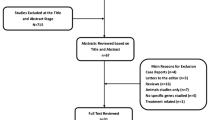Abstract
Our study of genetic homozygosity degree includes an analysis of the presence, distribution, and individual combination of 20 selected genetically controlled morphophysiological traits in the group of patients (N = 93) with congenital hip dislocation (CDH) and in control sample consisting of schoolchildren from Belgrade (N = 200). Assuming that CDH is a genetically controlled disease, we made a hypothesis that an increased homozygosity level, as well as the changed variability among the patients, could be a population-genetic parameter for the prediction of the illness. Taking into consideration our experience, as well as the experience of numerous scientists who studied the nature of the inheritance of mono- and oligogenically controlled qualitative traits, we applied a methodology to estimate the proportion of such homozygously recessive characters (HRC-TEST). This population-genetic study did not only show statistically significant difference of the middle values of genetic homozygosity (CDH: 7.1 ± 0.2; control: 5.2 ± 0.1), but of the differences in the type of distribution too, as well as the differences in the presence of certain individual combinations of such traits. The described methodology can be used in further analyses, with hope that it can be applied as an early prognosis for decreased resistance to different diseases. The frequencies of ABO blood types in the sample of CDH patients were similar to the average value of the Serbian population, while the percentage of blood group A is slightly increased. Comparing frequencies of Rh blood groups, there is no difference between tested samples.
Similar content being viewed by others
REFERENCES
Horton, W.-A., Schimke, R.-N., Kennedy, J., and De Smet, A., Autosomal Dominant Inheritance of Congenital hip Dislocation, Am. J. Hum. Genet., 1979, vol. 31, p. 74A.
Sollazo, V., Bertolani, G., Calzolari, E., et al., A Two-Locus Model for Non-Syndromic Congenital Dysplasia of the hip (CDH), Ann. Hum. Genet., 2000, vol. 64, pp. 51–59.
Wynne-Davies, R., A Family Study of Neonatal and Late Diagnosis of Congenital Dislocation of the Hip, J. Med. Genet., 1970, vol. 7, p. 315.
Crossan, J.F. and Wynne-Davies, R., Research for Genetic and Environmental Factors in Orthopedic Diseases, Clin. Orthop., 1986, vol. 210, pp. 97–105.
Czeizel, A., Tusnaday, G., Vaczo, G., and Vizkelety, T., The Mechanism of Geneticpredisposition in Congenital Dislocation of the Hip, J. Med. Gen., 1975, vol. 12, p. 121.
Beals, R.K., Familial Primary Acetabular Dysplasia and Dislocation of the Hip, Clin. Orthop., 2003, vol. 406, pp. 109–115.
Winchester, A.-M., Genetics, Cambrige: Ribersive Press, 1973.
Mader, S., Human Biology, 5th ed., Chapter 19, WBC Mc Graw-Hill, 1998.
McKusick, V.A., Mendelian Inheritance in Man: Catalogs of Autosomal Dominant, Autosomal Recessive and X-linked Phenotypes, 9th ed, Baltimore: Johns Hopkins University Press, 1990.
Knezevic, D., Variability and Inheritance of Morpho-physiological Traits of Inhabitants of Prokuplje, MSc Thesis, Belgrade: Univ. Belgrade, 1984.
Marinkovic, D., Ilic, M., and Spremo, B., Studies of Human Population-Genetic Variation. Comparasion of Homozygously Recessive Traits in Attendants of Special and Regular Schools in Serbia, Arh. Biol. Nauka, 1990, vol. 42(3–4), pp. 11–12.
Marinkovic, D. and Cvjeticanin, S., Studies of Human Population-Genetic Variation. The Freqeuncies of ABO Blood Types and Homozygously Recessive Traits among Top Sportsmen and Young Intelectuals, Arh. Biol. Nauka, 1991, vol. 43(1–2), pp. 5–6.
Cukuranovic, R., Genetics and Morphophysiological Studying of Balkan Endemic Nephropathy, PhD Thesis, Nis: Univ. Nis, 1992.
Markovic-Denic, Lj., Marinkovic, D., Jankovic, S., and Radovanovic, Z., Population Genetics Analyses of Chronic Lymphocytic Leukemia, Arh. Biol. Sci., 1992, vol. 44(1–2), pp. 3–4.
Marinkovic, D., Jovanovic, D., Cvjeticanin, S., et al., Genetic Homozygosity and Normal vs. Pathological Human Variation, Genetika, 1994, vol. 36(3), pp. 147–156.
Pesut, D., Population-Genetic Approach in Etiology of Bronchus Carcinoma and Lung Tuberculosis, PhD Thesis, Belgrade: Univ. Belgrade, 1994
Cvjeticanin, S., Variability of Genetic Homozygosity Degree during Selection for Top Sportsmen, PhD Thesis, Belgrade: Univ. Belgrade, 2000.
Dzhvarisheishvili, O.G. and Ksenofontov, Iu.P., Genetic Blood Markers in Occupational Bronchial Asthma, Genetika, 1981, vol. 17(5), pp. 906–909.
Meshaljin, E.N., Okuneva, G.N., Vlasov, Iu.A., and Vel’tmander, N.N., ABO and Rh Blood Groups in Cardiovascular Pathology, Kardiologiia, 1981, vol. 21(4), pp. 46–50.
Lourie, J.A., Is There an Association between ABO Blood Groups and Primary Osteoarthrosis of the hip?, Ann. Hum. Biol., 1983, vol. 10(4), pp. 381–383.
Taboridze, I.I., Aladashvili, L.T., and Lordkipanidze, E.F., Association of the ABO Blood Groupsystem and hip Joint Dysplasia, Ortop. Travmatol. Protez., 1991, no. 8, pp. 23–26.
Volkova, K.I., Blinetskaia, Z.S., and Fateev, I.N., Genetic Blood Markers of the ABO System in Patients with Pulmonary Tuberculosis in Relation to Ethnic Origin, Probl. Tuberk., 1991, vol. 10, pp. 55–58.
Janardhana, V., Propert, D.N., Green, R.E., ABO Blood Groups in Hematologic Malignancies, Cancer. Genet. Cytogenet., 1991, vol. 51(1), pp. 113–120.
Gekht B.M., Agafonov B.V., Tsuman V.G., et al., Analysis of the Association of ABO Blood Groups and Rhesus Factor with Myastenia, Vestn. Ross. Akad. Med. Nauk, 1995, no. 6, pp. 16–19.
Su, M., Lu, S.M., Tian, D.P., et al., Relationship between ABO Blood Groups and Carcinoma of Esophagus and Cardia in Chaoshan Inhabitants of China, World. J. Gastroenterol., 2001, no. 7(5), pp. 657–661.
Coleman, S.-S., Congenital Dysplasia and Dislocation of the hip, Chapter 1, Saint Louis, 1978.
Klisic, P., Congenital hip displasia in newborns, PhD Thesis, Belgrade: Univ. Belgrade, 1971.
Robert, J.-M., Genetique, Collection de la biologie a la clinique, Paris, 1983.
Author information
Authors and Affiliations
Additional information
__________
From Genetika, Vol. 41, No. 8, 2005, pp. 1142–1146.
Original English Text Copyright © 2005 by Cvjeticanin, Marinkovic.
This text was submitted by the authors in English.
Rights and permissions
About this article
Cite this article
Cvjeticanin, S., Marinkovic, D. Genetic Variability in the Group of Patients with Congenital Hip Dislocation. Russ J Genet 41, 936–940 (2005). https://doi.org/10.1007/s11177-005-0184-8
Received:
Issue Date:
DOI: https://doi.org/10.1007/s11177-005-0184-8




